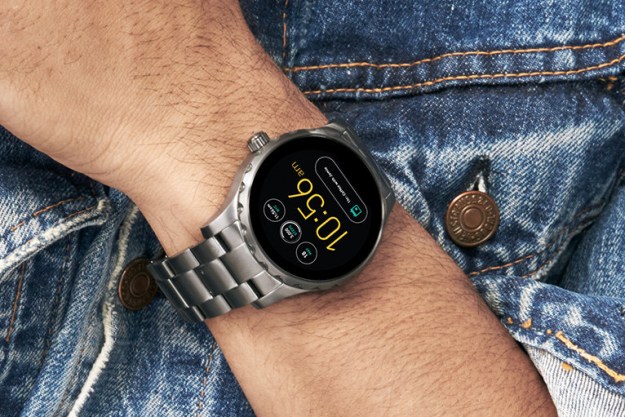Thync is a wearable device that delivers the effects of either a sleeping pill or a double espresso, without any of the drawbacks, in just one 15-minute session.
Drugs are bad. Even the legal ones aren’t great, regardless of whether its caffeine, alcohol, or a sleeping pill. Thync is the digital age’s answer to those drugs. It’s a wearable device designed by neuroscientists to relax or stimulate the mind and body, using ultrasound delivered directly to your brain, all in a matter of minutes.
And it has none of the drawbacks — psychological or physical — of the drugs it effectively replicates. And your body never builds up a tolerance.
If you want to see what the Thync looks like for yourself, you can’t.
It sounds like science fiction, but it’s science fact, and I gave it a try to see if it really worked. Sumon Pai, Thync’s Executive Director, explained how the device activates areas of our brain we already naturally use. For example, to motivate and fire you up, the Thync sparks the brain in a similar way to the so-called “fight or flight” feeling, just without any running or panicking. The ultrasonic waves are safe, and there’s no chance of it frying any brains — something I was very pleased to hear.
The Thync has two parts. The main unit is smaller than the palm of your hand, and sticks to your temple. It’s connected via a thin strip to another sensor stuck to the back of your neck. It’s light, and although I only saw a pre-production unit, its triangular, curved shape looked swish.
I was given the option of a relaxing or motivating session. I choose the former. The Thync could be used to relax after a tough day, to promote sleep, or even combat jet lag. When used to wake up your mind, the Thync could improve concentration, and provide an almost instant motivational energy boost.
Relaxed in 15 minutes
It’s all controlled using an app, where you can select modes, and adjust the intensity of the ultrasound. A little variation is recommended at first, before raising the level to a high point for the duration. Each session lasts 15 minutes. Once active, the Thync produces a slight tingling where it connects to the body. It’s not uncomfortable, but it’s definitely noticeable. I still felt it for an hour or so after its removal.
During the 15 minutes, I certainly began to feel more relaxed, but then I was in a very pleasant hotel suite having an interesting conversation. As the timer ran out, a final five minute booster mode was activated.

“This is where people often get the full effect,” I was told. When I’m keyed up, I tense my shoulders, and to relax them I usually have to make a conscious effort. Within a minute, my shoulders had relaxed, my legs stretched out, and I settled back into the chair. None of which was intentional. It just happened.
It was pointed out that not only was my body language different from how it was at the start of the interview, but my face had apparently relaxed too. I wasn’t rooted to the seat, but I really didn’t feel like getting up. My body had “weight” to it because I was properly relaxed. Pretty surprising given I’d only just escaped the chaos of CES.
Yes, I’m prepared to accept it could have been psychological. My state of mind may have been prompted by the conversation and the effects I was told the device would have. Or not. Only an extended test of the Thync will prove its true effectiveness, but in the moment, the effect was pronounced.
Clandestine secrecy
If you want to see what the Thync looks like for yourself, you can’t. The company is keeping the design a secret for now, and would only let me photograph it provided the device was covered up. Hence the picture of me with my hand on my temple like I’ve got a splitting headache. In reality, the Thync’s main unit is hidden underneath my hand, giving you an idea of its placement and small size. This only served to increase the almost clandestine secrecy of this truly unusual wearable device.
My body had “weight” to it because I was properly relaxed.
Thync wants to put the first-of-its-kind wearable on sale before the end of the year, and although the price hasn’t been decided, it’s going to be in the current wearable tech average price range – so, somewhere between $150 and $500. The one drawback is the cable which links the two sensors together: It’s a one use item, meaning you need a whole stack if the Thync is to be used on a regular basis. A subscription model is one possibility being considered, but no decision has been made.
If the effects I felt were really down to the Thync, then the price may not be all that important. People already line up to alter their mind using sanctioned and unsanctioned means, all of them potentially unhealthy. The prospect of doing the same thing safely, quickly, and effectively, with none of the long-term problems, and for a few hundred dollars, is a tantalising one.
Highs
- Mind-bendingly cool tech
- Mind-bending effects
- Lightweight and portable
Lows
- Effects not proven to work yet
- Pricing could be restrictive




